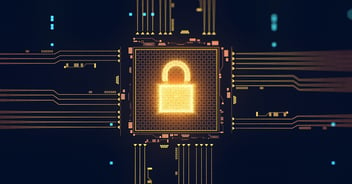

The facility management market was estimated at 49.6 billion USD in 2023 to 94.8 billion USD by 2028, at a CAGR of 13.8%. The Managed Services segment is expected to register the fastest growth rate during the forecasted period.
The integration of technology and sustainability has emerged as a pivotal element, reshaping the way facilities and buildings are managed and operated. The interest in technology-driven solutions underscores a significant shift towards more efficient, sustainable, and occupant-friendly practices. As we move into this transformation, it's crucial to understand the roles of two primary stakeholders: building occupiers, including owners and lessees, and service providers, who extend both hard and soft services to these corporate occupiers. This blog explores the technological landscape that holds the potential to redefine the provision of facility management solutions.
The Rise of IoT in Facility Management Solutions
The Internet of Things (IoT) plays a critical role in the technological revolution. With decreasing costs of hardware, it is now more feasible than ever to connect and monitor buildings in real time. One significant aspect of this progress is the ability to use technology for monitoring and automation purposes, enabling tracking parameters like temperature, humidity, occupancy, energy consumption, and equipment status. By analyzing this wealth of data one can identify trends, optimize resource usage, and address maintenance issues proactively before they become issues. To successfully implement IoT, it is essential to have a framework for data analysis and decision-making. This approach not only improves employee and customer experiences, but it also leads to streamlined operations and reduced operational costs through predictive analytics when integrated into facility management software.

Unified & Integrated Facility Management Software
Integrated Facility Management Software (IFM) has transformed the management of facility operations. It is anticipated that the market for facility management software will expand with a compound annual growth rate (CAGR) of 5.0% from 2023 to 2030, achieving a value of USD 1922.12 billion by the end of 2030. Platforms like Ramco FMS bring together planning, maintenance, and subcontractor management in one system. This allows seamless communication across departments, fostering a culture of data-driven decision-making. By offering comprehensive insights into facility performance, IFM enhances workflow efficiency and resource allocation, thereby bolstering operational efficiency and curtailing costs.
Streamlining Maintenance using Computerized Maintenance Management Systems (CMMS)
The digitization of maintenance management through Computerized Maintenance Management Systems (CMMS) represents another cornerstone in the technological evolution of facility management. CMMS solutions automate and digitize the scheduling, tracking, and execution of maintenance activities, centralizing data and workflows to foster proactive maintenance planning. Such facility management solutions are instrumental in transitioning from reactive to predictive maintenance strategies, minimizing equipment failures and downtime.
Read our whitepaper on Facility Management for The Digital Ecosystem
Leveraging Mobile Solutions for On-the-Go Management
The advancements in mobile technologies have transformed the interactions between facility managers and their field workforce. Gone are the days of reliance on phone calls for communication; mobile applications now facilitate instant access to critical information, task creation and tracking, inspections, and stakeholder communication, anytime and anywhere. This real-time access empowers facility managers, improving responsiveness, streamlining workflows, and boosting overall operational efficiency.
Energy Management & Sustainability - The Core of Modern Facility Management Solutions
Energy management and sustainability are increasingly becoming integral to facility management strategies, driven by both environmental considerations and cost efficiency. The worldwide market for energy management systems (EMS) reached USD 40.77 billion in 2022 and is projected to grow at a CAGR of 13.3% from 2023 to 2030. Energy management software enables facility managers to monitor energy usage meticulously, pinpoint inefficiencies, and implement energy-saving measures.
Initiatives like lighting upgrades, HVAC improvements, and renewable energy to reduce energy usage and emissions save long-term costs. Technology plays a key role, giving managers tools to make decisions that meet environmental and financial goals.
Benefits of Using Technology in Facility Management Solutions
Facility management software offers multiple benefits, including enhanced operational efficiency. By enabling real-time monitoring and data analysis, technology facilitates proactive maintenance, optimizes resource allocation, and reduces energy consumption. This not only leads to significant cost savings but also improves the sustainability of operations. Additionally, technology enhances the experience by ensuring that facilities are more comfortable, secure, and responsive to user needs. In essence, technology empowers us to achieve higher standards of service delivery while simultaneously addressing environmental concerns and achieving financial objectives.
Explore Ramco’s Facility Management Solution Brochure
Challenges and Considerations
Implementing new technologies in facility management solutions presents challenges such as initial costs, the need for staff training, and concerns over data security. Additionally, legal and regulatory frameworks can be complex, especially when introducing IoT devices and cloud-based systems. To overcome these obstacles, organizations should prioritize strategic planning, including cost-benefit analysis to justify investments. They should invest in comprehensive training programs ensuring staff are equipped to utilize new technologies effectively. Implementing robust cybersecurity measures and staying abreast of legal requirements are crucial for protecting sensitive information and ensuring compliance. Collaboration with technology providers can also offer valuable support and insights for navigating these challenges.
The Future of Facility Management with Technology
The future of facility management is poised for further transformation with emerging technologies like augmented reality (AR) for enhanced maintenance visualization and blockchain for secure, transparent supply chain management. These innovations promise to make facilities more sustainable and energy-efficient by optimizing operations and reducing waste. However, the foundational technology that is instrumental to the success of the digital transformation is institutionalizing a unified data fabric for data-driven and automated decisions at all levels of the organizations. This shift is highlighted by the integration of smart energy management systems and sustainable materials into building design. Embracing these technologies will not only streamline operations but also significantly contribute to the global sustainability agenda, making facilities smarter, greener, and more efficient.
Conclusion - Embracing Technology as a Necessity
The interaction of technology and facility management solutions brings about efficiency, cost reduction, and a focus on sustainability. With IoT, integrated facility management software, CMMS, mobile apps, and energy solutions, businesses can optimize and sustain operations, benefiting occupants. Getting used to tech-driven management is essential for competitiveness and evolution. Technology's role in advancing efficient, sustainable practices is critical. It promises smarter, greener facilities through integrated solutions.
Frequently Asked Questions (FAQs)
Enterprise asset management (EAM) involves the management of mission critical assets of an organization throughout each asset's lifecycle. EAM is used to plan, optimize, execute, and track the needed maintenance activities with the associated priorities, skills, materials, tools, and information. The aim is to optimize the quality and utilization of assets throughout their lifecycle, increase productive uptime and reduce operational costs.
Enterprise asset management (EAM) involves the management of the maintenance of physical assets of an organization throughout each asset's lifecycle. EAM is used to plan, optimize, execute, and track the needed maintenance activities with the associated priorities, skills, materials, tools, and information.
The software helps in effective maintenance of assets through preventive, predictive, shutdown and breakdown maintenance strategies. The system also helps enterprises mitigate equipment risks by enhanced safety standards. The streamlined operations and improved asset performance helps organizations increase their investment effectiveness.
EAM is important because it helps organizations track, assess, manage and optimize asset quality and reliability. Asset intensive Organizations have hundreds, thousands, even millions of assets which needs to be maintained to maximize / optimize life of these assets to increase the return on investment.
The key features of effective EAM are:
- Work management.
- Maintenance Strategies (Preventive/ Predictive / Breakdown / Shutdown).
- Planning and scheduling.
- Supply chain management.
- Health and safety.
- Mobility.
- Analytics.
- Improved Asset Health at reduced cost through data driven maintenance Programs
- Complete visibilityon entire maintenance data across Equipment, across Models, across Branches to aid in analysis & decision making such as to Repair or Replace the Equipment
- Insightful analysis of Inspection Data to improve customer satisfaction
- Effective maintenance management enhanced by predictive maintenance and inbuilt analytics
- Increased reliability and safety, keeps complete track of all the inspections & calibration schedules
- Mobile Application enables users to execute work while “in the field” leading to minimized non-productive time and increased productivity and reduces duplication of work and human errors in recording information.
- Quick turnaround time through Actionable Notification & Alerts for every process in real time and accessible anytime and anywhere.
- Improved Regulatory Part of asset management involves the implementation of better O&M practices, which can significantly improve compliance.
Asset Intensive companies under the following Industries :
- Ports
- Cement and Mining
- Utilities
- Fleet Maintenance
- Equipment Rental
- Other Manufacturing
- Real Estate & Infrastructure
- Power Generation
Contact us for a meeting and schedule a demo
This differs on case to case basis, based on the type of installation and unique industry specific requirements. Contact us for a meeting and schedule a demo.
This differs on case to case basis, based on the type of installation and unique industry specific requirements. Contact us for a meeting and schedule a demo.
Stay Connected, follow us on LinkedIn / Twitter to know more about EAM Software latest trends.

Karthikeyan leads the Product Marketing for Enterprise Digital Solutions at Ramco Systems.He is an astute technology marketer with over 12 years of experience across the spectrum from products to services and product management. He follows technology trends ardently and the impact they have on businesses. He has formulated successful go-to-market strategies for manufacturing and other asset-intensive sectors – the likes of automotive, textiles, cement and heavy industries. Outside of work, you can catch him spending time playing Tennis, Badminton and going on Road Trips.


